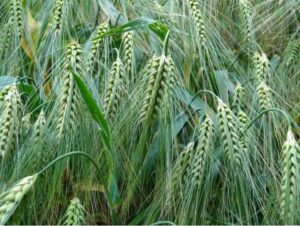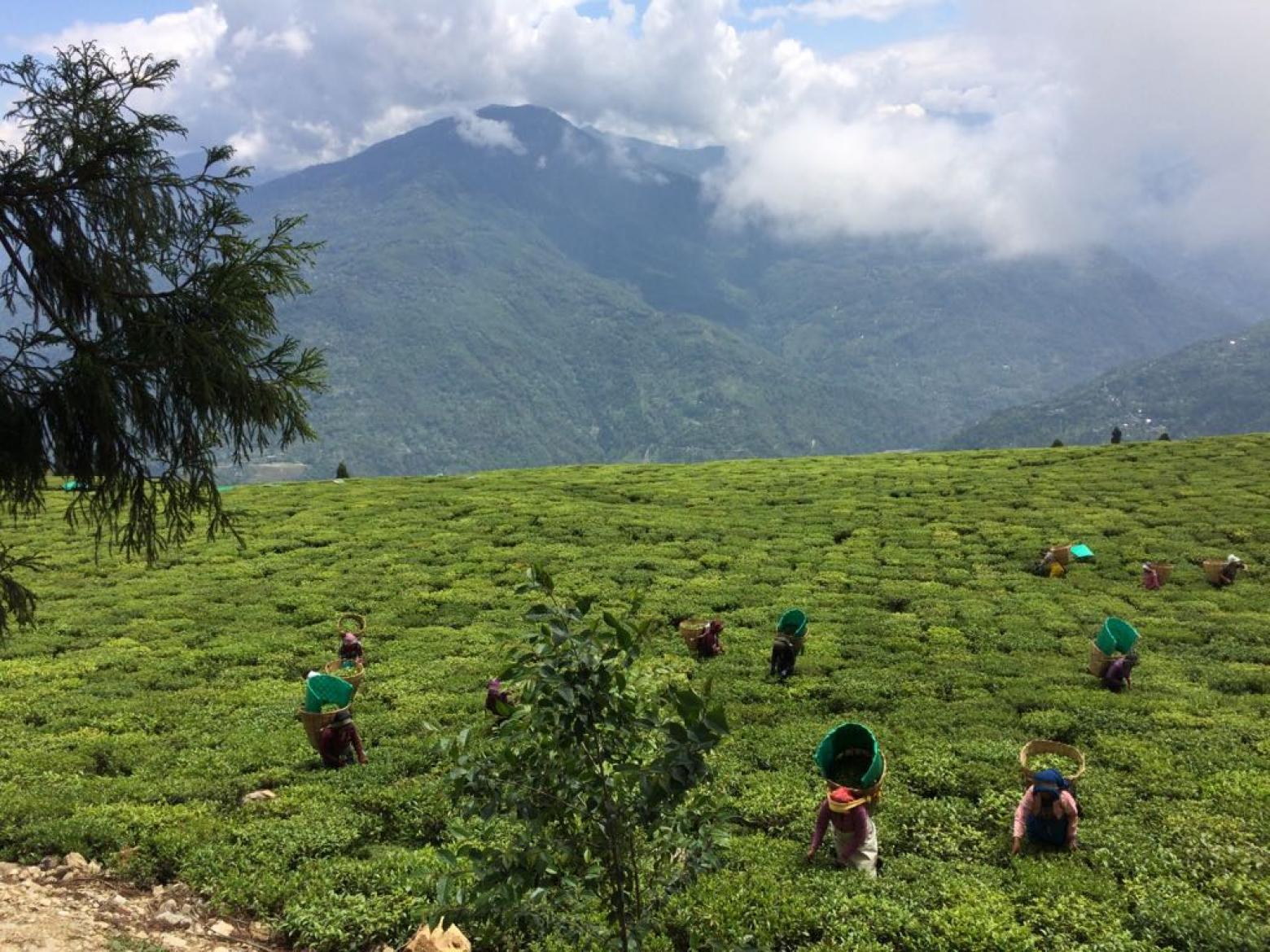Organic Farming in Sikkim: A technique known as “organic farming” tries to cultivate the land and raise crops utilizing organic waste (crop, animal and farm waste, water waste, and other biological components) in order to preserve the life and health of the soil. Sikkim’s organic agricultural industry contributes 16% of the state’s GDP and employs 65% of the total population.

Organic farming is crucial for the survival of our planet and our health for many reasons. To sustainably feed the planet, it is necessary. It is farmed with non-GMO methods and has a very low hazardous pesticide residual content. It is not necessary to harm the soil microorganisms or farm workers who grow robust, drought-tolerant crops.
Organic Farming in Sikkim
Facts about organic farming in Sikkim
- The government concentrated on establishing village panchayats as organic farming clusters. About 4 lakh farmers in Sikkim benefited from the organic farming that was done there on 8 lakh 35 thousand hectares of land. A goal of 50,000 hectares of land was established, and over 2,5000 farmer interest groups were established, connecting about 45 000 farmers to the organic program.
- Agriculture is the primary source of income and financial security for the sizable local population of Sikkim. However, biotic and abiotic forces have placed a cap on expansion. According to estimates, more than 80% of rural residents rely on agriculture and related industries for their economic, dietary, and food security. Sikkim’s agricultural practices are based on natural systems that have developed over many years of farmer experience.
- Although organic farming is defined in a variety of ways, all definitions concur that it is a system that relies on ecosystem management rather than outside agricultural inputs. By banning the use of artificial inputs like irradiation, veterinary medications, genetically engineered seeds and breeds, preservatives, additives, and pesticides, it starts to take into account potential environmental and social effects. In their place, site-specific management techniques are used to control pests, diseases, and weeds while preserving and improving long-term soil fertility.
- An age-old, sustainable practice known as organic farming preserves both the earth’s inherent beauty and the environment. The land is still productive as a result of its use, and drought-like situations are quite unlikely. To make Sikkim an organic state, almost 75000 hectares of land were converted to organic farming. The use of organic pesticides—chemical pesticides as opposed to chemical pesticides—was emphasized.
Sikkim ‘Organic Brand’
Additionally, the Sikkim Organic Brand had to be developed in order to appeal to both domestic and foreign markets. Sikkim’s marketing strategy emphasizes on specialized crops like cardamom, ginger, oranges, tea, kiwi, passion fruit, and mountain veggies due to its distinctive climate and farming tradition. The farmers’ way of life has only slightly improved as a result of the use of modern technology. The state of Sikkim has some innate advantages that strongly support organic farming.
Read More: 4 Fundamentals of Organic Agriculture

In accordance with our natural endowment, policies and programs on organic farming envision making Sikkim a model organic state. Sikkim’s farmers have long used organic farming as a traditional kind of agriculture. Because there is no guaranteed irrigation, farmers use a rain-fed farming method with an integrated strategy that works perfectly with the state’s agriculture, horticulture, and animal husbandry.
Sikkim has a wide variety of plant species, which add organic matter to the soil and speed up the process of transformation. Sikkim’s mountainous terrain demands sustainable farming methods that do not deplete the environment. Therefore, switching to an organic agricultural method would be advantageous for Sikkim, keeping in mind the preservation of the land from degradation, protection of the environment and ecology, and the continued good health of the population.
Due to its diverse agro-climatic conditions, which range from sub-tropical to alpine, the state produces a variety of crops. Five agro-climatic zones—tropical, subtropical, temperate, subalpine, and alpine—are distinguished in Sikkim. Temperate, subtropical, and tropical zones contain significant agricultural territory. Sikkim’s strategy, however, focuses on consumption and market expansion, health, education, rural development, and sustainable tourism in addition to organic production.
Which state ranks first in organic farming?
The first wholly organic state of India was founded in Sikkim. The assistance has assisted more than 66,000 farming households. The state’s strategy in Sikkim goes beyond organic farming and has had a revolutionary impact on the region. The transfer has benefited more than 66,000 farming households that look after more than 76,000 hectares of land. These rural areas have developed a solid understanding of organic farming methods.
The state government has assisted farmers by conducting 40,000 soil tests annually in order to improve soil health management. In addition, 3 organic farming livelihood schools taught 836 unemployed individuals, 695 of whom are now working as field supervisors.
Reasons for organic farming adoption in Sikkim
-
- It is a comprehensive production system that fosters and improves the biodiversity, biological cycles, and soil biological activity of agricultural ecosystems.
- It places a focus on adopting management techniques that give using off-farm inputs priority while keeping in mind that regional conditions necessitate regionally customized solutions. Wherever practical, synthetic materials are used along with agronomic, biological, and mechanical techniques to carry out a particular system function.

- farming with low output in rain-fed situations.
- Farmers in Sikkim are traditionally organic.
- About 15,000 hectares under cardamom that has never been fertilized.
- Promotion of tourism through organic village concept.
- Only 10.20 percent of the state’s entire land area is used for agriculture, and the other 89.80 percent is undeveloped and free of chemical influences.
Importance of organic farming in Sikkim
The Sikkimese traditional farming system, which is historically rain-fed and uses less external inputs, was thought to be the closest to organic farming. The mainstreaming of organic and agro-farming, on the other hand, was viewed as a method to protect the ecosystem, improve citizen health, and bring about significant socio-economic benefits. The decision, according to the government, will encourage local and international sustainable tourism, encourage young people to stay on the land, and provide possibilities to access high-end organic markets.
The preservation of traditional agricultural expertise is one of the goals of the Sikkim state policy on organic farming. Sikkim is the first state in India to formally adopt organic farming in an effort to increase soil fertility, safeguard the environment, promote healthy lifestyles, and lower the risk of disease. Additionally, it prohibited the state from importing chemical fertilizers, and Sikkim’s arable land has been using organic fertilizers ever since. The state’s political commitment and leadership were honored with the Future Policy Award.
Today’s discussion goes in-depth on Sikkim’s policies, which made it the first organic state in the world, organic farming in India, and its potential for our agricultural sector. Simultaneously, Sikkim’s strategy goes beyond organic farming and has had a profoundly transforming effect on the states and their residents. Sikkim has successfully demonstrated how other Indian states and nations around the world may scale up agroecology. Sikkim adopted a decision to formally transition to organic farming.
Sikkim made the decision to switch to organic farming in order to maintain long-term soil fertility and environmental protection. Additionally, it attempted to encourage healthy behavior and lower the chance of illness. With the help of this program, chemical pesticides and fertilizers were gradually phased out and eventually banned entirely in the state. Sikkim also outlawed the importation of any chemical fertilizers in the same year, requiring farmers to solely use organic fertilizers. The Sikkim state policy on organic farming’s primary goals are;
- To make agriculture lucrative, sustainable, and dignified.
- Boosting the fertility and production of the soil naturally.
- making sure to conserve water and soil.
- Ensuring food, nutrition, and agricultural biosecurity.
- Establishing and securing regional markets for products controlled by farmers.
- promoting biodiversity-based ecological agriculture.
- ensuring quality control in the manufacturing of organic agricultural inputs.
- supplying secure agricultural goods and commodities to enable the enhancement of human health.
- To ensure that the water, soil, air, and food are chemical-free, avoid using agrochemicals and other potentially harmful substances.
- ensuring food and seed independence.
- preserving and expanding agriculturally related traditional knowledge.

Sikkim Organic Mission
The Sikkim Organic Mission was established by the state of Sikkim in 2010. We started the Sikkim Organic Mission to hasten our progress toward earning the 100% organic label. By supplying seeds, fertilizer, and training farmers in non-organic methods, the mission assisted. More than 66,000 agricultural households in the state have profited from the switch to organic farming, which has also promoted rural development and sustainable lives.
Organic farming is not only improving public health and the ecology in the area, but it is also bringing in a lot of tourists to the state because of its verdant, lush farms, pure organic agricultural products, and food cooked from fresh vegetables. The Sikkim Organic Mission seeks to transition the nation’s food production to commercial agriculture. To increase their revenues, farmers in this state switched from growing food crops to growing vast amounts of cardamom.
Sikkim created the ideal crop incentives to lead farmers to choose organic farming. The government began extensively examining federal and state government programs. Farmers encounter a variety of issues depending on the ecology and crop. The drive to go organic requires developing plans that fulfill their demands and expectations. Additionally, organic farming protects biodiversity, improves soil fertility, is more climate change-resistant, and, to top it all off, produces healthier and tastier food.
However, high-yield agriculture cannot be produced using organic food because it lacks pesticides and other instruments. Studies from across the globe demonstrate that organic farms cannot produce more food than conventional farms. Farmers must experiment with new techniques for many seasons before they succeed, but when soils and biodiversity are recovered, yields rise.
The yield gap for organic food also vanishes in regions where the majority of the world’s population faces hunger. Organic farming use naturally existing materials while forbidding or severely restricting the use of manufactured materials. It improves the health of agroecosystems, including soil biological activity, biological cycles, and biodiversity.
Goals of the Sikkim organic mission
- To advertise Sikkim’s status as an organic state.
- avoiding synthetic fertilizers and pesticides, and progressively substituting organic fertilizers and manures, as well as biological techniques, for plant nutrients.
- describing steps to prevent sickness and pests. Create the necessary legal framework and infrastructure to launch real organic farming in Sikkim.
- Expanding market opportunities and pertinent tactics for the production of organic food.
- Developing Sikkim’s Organic Farming Policy.
- Five significant crops with significant organic market potential will each receive a set of organic growing practices. These crops include mustard, corn, ginger, turmeric, and hot peppers.
How is Sikkim benefiting from becoming an organic state?
The ecology and public health benefit from Sikkim’s conversion to organic farming. Additionally, it benefits the economy. Additionally expanding and increasing the local economy is tourism. Visitors can stay in an organic village where they can take in the scenery and eat wholesome, fresh food.
The government of Sikkim has established Sikkim Organic retail outlets in New Delhi that sell a variety of crops including pulses, rice, mandarin oranges, ginger, cardamom, and turmeric. There are plans to open more organic stores in other major cities. Farmers in Sikkim are now making 20% more money thanks to growing demand for their organic produce.

Why organic farming, and why is it needed?
Organic farming employs a variety of techniques to produce healthy crop yields without endangering the environment or the people who live and work there. Compost, green manure, and bone meal are a few examples of organic or natural fertilizers that are used. Crop rotation, companion planting, biological pest management, and mixed cropping are some of the strategies that are highlighted. And with organic farming, bug predators are raised.
The organic movement started in the 1940s as a reaction to agriculture’s growing reliance on synthetic fertilizers and pesticides; today, all conventional farming is regarded as organic. It is a farming strategy that employs disease, pest, and weed control techniques that are beneficial to the environment.
It can be characterized as an agricultural method that employs biological pest control and fertilizers made from plant or animal waste. In reaction to the harm that chemical pesticides and synthetic fertilizers were causing to the environment, organic farming was first practiced. It is a brand-new agricultural technique that restores, upholds, and enhances ecological harmony.
Sikkim crops ideal for organic farming
The three major crops are Black Gram and Rice Beans in Pulses, Maize, Rice, and Buckwheat in Cereals, and Soybean and Mustard in Oilseeds. Oranges and pears among fruits, ginger, cardamom, turmeric, and cherry peppers among spices, cabbage crops, peas and beans, tomatoes, and potatoes among vegetables are all significant horticultural crops. In addition, it is common practice to grow vegetables outside of the growing season and to produce potato and pea seeds at high altitudes.
Farmers have been making good money from growing flowers like Cymbidium, Rose, Gerbera, and Anthurium, thus many of them have turned to floriculture as a lucrative business. Important Sikkim organic crops that are profitable for farmers include wheat, paddy, maize, barley, buckwheat, cardamom, potatoes, tea, oranges, large cardamom, ginger, turmeric, baby corn, and pulses.
Sikkim Mandarin Orange: The mandarin orange is the most well-known fruit from India. The Sikkim mandarin orange is the state’s most significant exportable fruit. In addition to Sikkim, India as a whole enjoys Sikkim mandarin oranges.
Cardamom: One of the most significant cash crops in this region of the globe, cardamom, is produced in large quantities in Sikkim. Sikkim supplies 70% of the Indian market for huge cardamom, making it the nation’s top producer.
Black Cardamom: When used in rice and other crops, black cardamom, which is 4-6 times larger than little cardamom, imparts an aromatic flavor. Ice cream that is high in antioxidants is only one of the many things that do. When making pan masala, it is one of the most crucial and commonly used ingredients.
Ginger: Ginger is a significant economic crop with aromatic rhizomes that are used in food and medicine. It is a traditional Asian crop with Southeast Asian roots.
Baby Corn: The groundwork for growing baby corn has recently been laid in Sikkim. The crop’s goal is to improve the farmers’ financial situation as much as possible. Examples of a state’s crop potential include maize production and productivity. There is just one place in the world where you can grow a lot of maize for a very low price, and that is Sikkim.
Turmeric: Turmeric has a lot of health advantages in addition to being a regular component in many meals. It has an orange-yellow appearance and a savory odor. Use it in the cosmetics or beauty care industry to maintain cleanliness and ensure that things stay that way.
Challenges faced by organic farmers in Sikkim
Despite lately growing in popularity, Indian agriculture has not yet given organic farming the spotlight it deserves. Although many states have achieved great strides in organic farming, there are still issues with infrastructure and regulation. In order to boost farmers’ incomes, the Sikkim state government has launched a number of measures to encourage organic farming. The fact that organic farming has not yet succeeded in breaking into the agricultural mainstream, despite the field’s advancement, is remarkable.

The main issue is the overuse of herbicides and insecticides to manage weeds. Insect and weed species are now resistant to pesticides due to overuse of chemicals. The move from conventional to organic farming has its first obstacle. Farmers often lament the lower yield of organic farming compared to traditional chemical farming. Farmers that practice organic farming are unable to use synthetic pesticides, making them vulnerable to dangerous attacks by mutated insects.
The problem has gotten worse due to the identification of new pests and diseases as well as the ineffectiveness of traditional pest control techniques in preventing crop damage. Farmers have therefore demanded knowledge and training to deal with insect assaults as a result of how it lowers total production. Furthermore, organic producers also face challenges due to a significant lack of adequate infrastructure.
The majority of organic farming focuses on the production of perishable fruits and vegetables. Small and medium-sized farmers in tribal belts and hilly regions are impacted by an undeveloped supply chain. To prevent cross-contamination, organic growing products must be stored apart from conventional ones. When organic produce finally reaches the market after overcoming all of these obstacles, customers find it pricey and choose not to purchase it.
Sikkim’s sustainable organic farming fundamental difficulties
- Organic certification must be made sustainable by adopting the PGS system for non-exportable products and continuing with third-party certification for exportable commodities.
- Necessary infrastructure and organic materials should be provided for sustainable crop production and conservation.
- Improvements in different methods of composting- needy organic farmers should be provided with permanent structures of urine pits with manure.
- Promotion of vermicomposting technology – permanent structures should be constructed and given appropriate training to the beneficiaries.
Conclusion
Crops receive nutrients from organic farming, which boosts sustainable production in a healthy, pollution-free environment. The goal is to grow crops with a high nutritional value. Sikkim is the first state in the world to be entirely organic; all of its farming is recognized as organic. The strategy led to a complete ban on the sale and use of chemical pesticides in the state as well as the phase-out of chemical fertilizers and pesticides.


